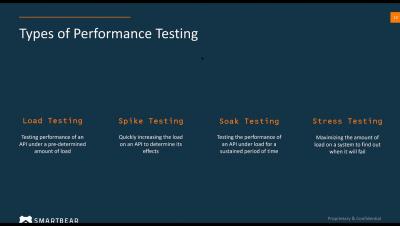Systems | Development | Analytics | API | Testing
DevOps
Eliminate Tool Limitations With the "Test Infrastructure as a Freeway" Approach
Continuous Integration Best Practices - Part 2
This is the second part of my blog series on CI/CD best practices. For those of you who are new to this blog, please refer to Part 1 of the same series and for those who want to see the first 10 best practices. Also, I want to give a big thank you for all the support and feedback! In my last blog, we saw the first ten best practices when working with Continuous integration. In this blog, I want to touch on some more best practices. So, with that, let’s jump right in!
Continuous Integration Best Practices - Part 1
In this blog, I want to highlight some of the best practices that I’ve come across as I've implemented continuous integration with Talend. For those of you who are new to CI/CD please go through the part 1 and part 2 of my previous blogs on ‘Continuous Integration and workflows with Talend and Jenkins’. This blog would also introduce you to some basic guidance on how to implement and maintain a CI/CD system. These recommendations will help in improving the effectiveness of CI/CD.
AlertSite Customers Reduce MTTR and Support DevOps Cycle
Making the Bet on Open Source
Today, Docker or Kubernetes are obvious choices. But, back in 2015, these technologies were just emerging and hoping for massive adoption. How do tech companies make the right open source technology choices early?
Overview: Talend Server Applications with Docker
Since the release of Talend 7, a major update in our software, users have been given the ability to build a complete integration flow in a CI/CD pipeline which allows to build Docker images. For more on this feature, I invite you to read the blog written by Thibault Gourdel on Going serverless with Talend through CI/CD and Containers.
Going Serverless with Talend through CI/CD and Containers
Continuous integration, delivery and deployment, known as CI/CD, has become such a critical piece in every successful software project that we cannot deny the benefits it can bring to your project. At the same time, containers are everywhere right now and are very popular among developers. In practice, CI/CD delivery allows users to gain confidence in the applications they are building by continuously test and validate them.
Talend Summer'18 Release: Under the Hood of Talend Cloud
Today on July 19, we released Talend Summer ’18, which is jam-packed with cloud features and capabilities.
How to containerize your integration jobs with one click with Talend and Docker
Talend Data Integration is an enterprise data integration platform that provides visual design while generating simple Java. This lightweight, modular design approach is a great fit for containers. In this blog post, we’ll walk you through how to containerize your Talend job with a single click. All of the code examples in this post can be found on our Talend Job2Docker Git repository. The git readme also includes step-by-step instructions.





